
Contents


Free From Human Intrusion
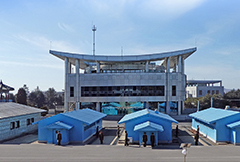

Dreaming of Delightful Zone

Take You to the DMZ

Seeing With the Mind, Talking Through the Lens

the Design of Handheld Fans


Shared Together for Double the Happiness


Founded in the Spirit of Candlelight

Let the Wind of Peace
Take You to the DMZ
The Warmth of Rapprochement
on the Korean Peninsula Welcomes Travelers
The day after the historic 2018 Inter-Korean Summit ended successfully, the Seoul Metropolitan Government gathered participants to take them on a special trip to the Demilitarized Zone (DMZ), called the “Trip With the Wind of Spring.” This special tour was to celebrate the success of the 2018 Inter-Korean Summit and to share the joy for peace on the Korean Peninsula. There was an explosive response from about 5,000 applicants, and only 100 could go on the trip because of the various restrictions. It must be that the summit grew a strong sense of assurance among the people that the DMZ is no longer a dangerous place, and also a sincere wish and hope for the unification of the two Koreas. Now that the tension and anxiety has drawn away, as the good mood of reconciliation sprang up, a trip that can truly be called “a trip” was made possible.
Written by Park Ji-yeon Photographed by Studio Kenn
Illustrated by Hagogo

Welcome!
Is This Your First Time in the DMZ?
Recently, tours of the DMZ have gotten a tremendous amount of interest from both Koreans and non-Koreans. The DMZ has been voted by non-Korean visitors as the number one travel destination in Korea. An episode of the popular TV show “Welcome, First Time in Korea?” (어서와 ~ 한국은 처음이지?) introduced the DMZ tour, and that combined with the positive outcome of the 2018 Inter-Korean Summit, has contributed to this heightened interest.
The swath of land bounded on both sides covers an area of land 1.5 times bigger than Seoul proper, and covers 1/250 of South Korea’s land area. Disarmament and silence are only allowed in this area. The DMZ tour is the only open door for us to have a look into this no-man’s land. The Paju Dora Observatory, the Yeoncheon Typhoon Observatory, the Goseong Unification Observatory, the Odusan Unification Observatory and many more will move your heart to hope and they all foresee the unification of the separated Koreas. Through binoculars and with your own eyes, you will see North Korean mountains and villages so closely and vividly. One could easily question, “Why is it so difficult to go over to the other side?” One can see, but cannot go. Whoever visits the DMZ for the first time will have a hard time witnessing this sad reality of the two Koreas.
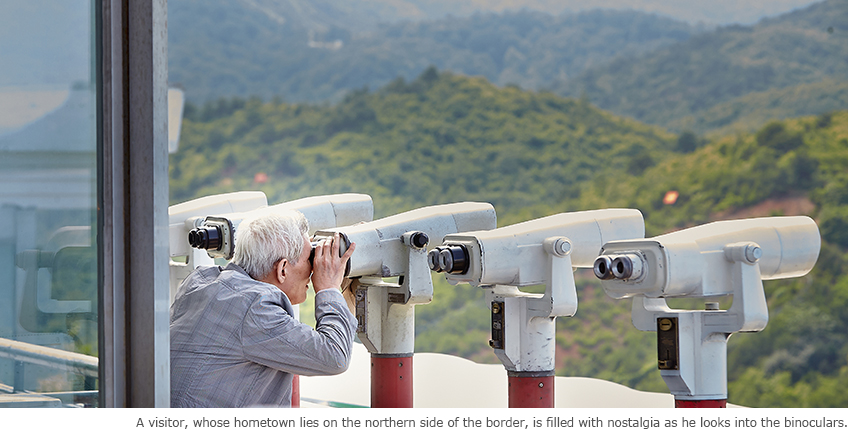
A Train Trip to the Northernmost Area
Dorasan Station, a railway station on the Gyeongeui-Line, is the northernmost stop on South Korea’s railway line, northwest of Seoul. It’s only 700 m from the Southern Limit Line inside the DMZ. Since this area is within the Civilian Control Zone, visitors will only be granted access after presenting valid ID at Imjingang Station. Baengma Highland Station, the northernmost stop in Gangwon-do Province, however, is open to visitors. This station is also close to the Dorasan Observatory, the Dorasan Peace Park and the Third Tunnel.
The Gyeongwon-Line that once connected Gyeonggi-do Province and Wonsan in North Korea’s part of Gangwon-do Province now stops in Cheorwon. Yeoncheon-gun’s Sintanlee Station and Cheorwon-gun’s Baengma Highland Station are on this line. The Gyeongwon-Line used to be a bridgehead that connected Wonsan and the northeastern part of North Korea, such as the towns of Hamheung and Najin on the East Sea. It would be a worthwhile trip to travel to Baengma Highland Station with the hope of one day traveling all the way to Wonsan. A famous saying that compared the Gyeongwon-Line to an “iron horse” is written on a signboard erected at the very end of the platform of Baengma Highland Station. “The iron horse longs to run freely.”
Through the Panmunjeom Declaration, South and North Korea agreed to take practical steps toward the connection and modernization of the railways, including the Gyeongeui-Line and other roads.
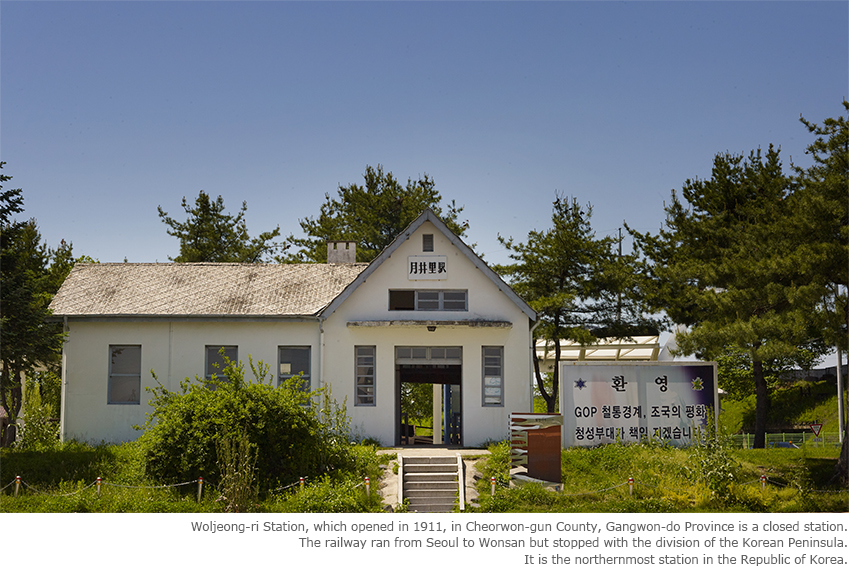

Mother Nature Embraces
the Pain of the DMZ
The Korean War (1950-1953) burned every green field and turned them into lifeless lands of ashes that stank with gunpowder. Looking at the DMZ from the northernmost observatories makes one wonder how the lifeless land has become a land that is so full of life again. Because the DMZ allows no one to enter, it encouraged wildlife to thrive and to be preserved. Mother Nature embraced this heartbroken land and breathed life back into it. The Cheorwon Plateau that’s formed with lava, the DMZ Eco Peace Park, the Imjingang River, the Hantangang River, Goseokjung and Yangugun’s Dutayeon Valley are known for their beautiful scenery. The breathtaking beauty of this land is hard to describe in words.
The DMZ is no longer looked at as the most dangerous, forbidden place on earth that welcomes no one. The DMZ is now more approachable and much closer to the people. Tours and nature tours that highlight the geological and historical importance of the DMZ are drawing people closer to this land, full of hope. Let us experience the DMZ with our eyes and hearts, breathing in the scent of hope and life.

Odusan Unification Observatory
Located in Paju City, Gyeonggi-do Province, Odusan was a battlefield during Goguryeo and Baekje times and has long been a significant spot of military importance to protect Seoul and Gaeseong. The Odusanseong Fortress has been designated as official historical site No. 351. The observatory is situated along the northernmost armistice line of the western front where the Hangang River and the Imjingang River meet. Built on the summit of Odusan mountain, the observatory offers a landscape view of the two rivers flowing toward the West Sea, as well as Hwanghae-do Province in southern North Korea. North Korea’s guard posts, threshing floors, a Kim Jong-il Exhibition Hall, the People’s Cultural Center, Imhan Elementary School, the Deokso Reservoir, Gunjangsan Mountain and Gaeseong’s Songaksan Mountain can all be seen from this observatory. To the south, the observatory offers views of the 63 Building on Yeouido Island in Seoul.
The Odusan Unification Observatory is also a place where separated families visit to find comfort. There are different traditional rituals that are done at the observatory for the separated families during Chusoek and Seollal.
Trip Points
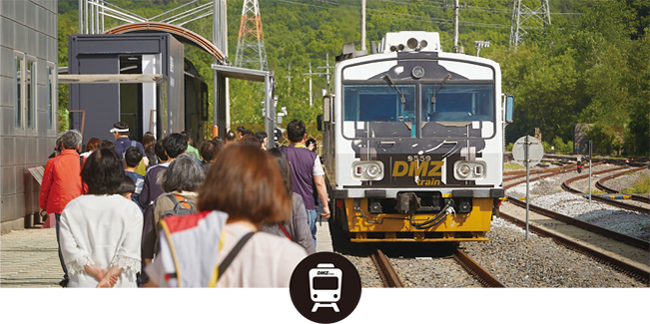
DMZ Unification Train
Dividing the peninsula, the DMZ is a no-man’s land that strictly restricts visitors. However, a part of the DMZ has been open to visitors since 2014, as part of the route for the DMZ tourist train.
Traveling on the DMZ train toward Gyeonggi-do Province, you get a chance to access the Civilian Control Zone (CCZ). Only the DMZ train can take people across the Imjingang River on its railroad bridge. As the visitors cross over the Imjingang River on the train, they can see the pier of the old railroad bridge that was destroyed by a bombing raid during the Korean War.
The DMZ train going toward Gangwon-do Province stops by the Durumi Peace Village where teenagers can experience farming in the summer. This village is right by the Civilian Control Zone, as well. Also in this village there’s a building made after the Russian architectural style that was once used by North Korea’s Labor Party. The front entrance stairway and the walls of the building are left with traces of the ravages of the Korean War. This is a place one can ponder upon war and peace.

DMZ Museum (Goseong-gun, Gangwon-do Province)
The DMZ Museum was built with the hope for peace between South and North Korea. It’s located in the Civilian Control Zone in the most northeastern corner of South Korea abutting the East Sea, and it faces Geumgangsan Mountain. The museum offers exhibitions and video clips that reflect on what the Korean War has left, including pictures of Korea before and after the Korean War, the historical meaning of the Military Demarcation Line and the Demilitarized Zone, the ongoing military conflict, and the untouched ecosystem of the DMZ.
The DMZ, being a heartbreaking place, stands as a pivotal place not only for Koreans but also for people worldwide. One outdoor sculpture in the museum says, “Nevertheless, let us love,” and it sends a profound message to both Koreans and non-Koreans who come to visit.
In celebration of the 2018 Inter-Korean Summit, the museum offers free admission from April 28 to the end of the year.
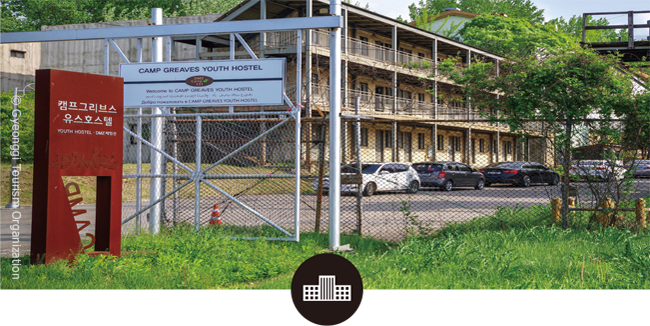
Camp Greaves
Located inside the Civilian Control Zone, Camp Greaves was a military base for the 506th U.S. 2nd Infantry Division for about 50 years after the Korean Armistice Agreement. This camp is one of the oldest U.S. military bases that displays characteristics of modern architecture of the U.S. and is considered to be the a great cultural heritage site.
Remodeled into the very first youth hostel located inside the Civilian Control Zone, Camp Greaves has become a popular travel destination. Camp Greaves was the filming location for the famous TV show “Descendants of the Sun” (태양의 후예). The popularity of the show attracted many Koreans as well as fans of Korean soap operas from all over the world.
From May until the end of the year, Camp Greaves runs its “DMZ Peace Platform,” turning Camp Greaves into a place for the arts and arts exchanges. About 10 facilities, including the ammunition chamber and outdoor spaces, at Camp Greaves are open for this project.
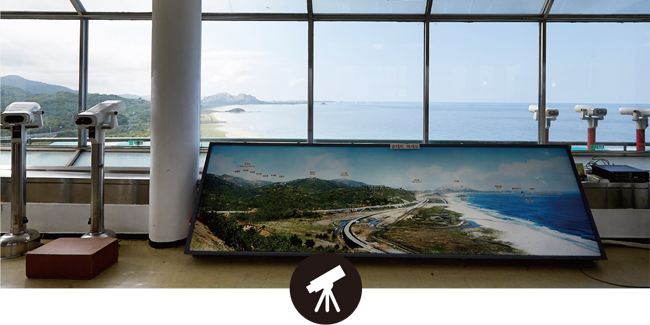
Goseong Unification Observatory
Goseong Unification Observatory is the northern-most observatory in South Korea. Offering a stunning view of Geumgangsan Mountain, the observatory serves as a comforting place for displaced North Koreans, and a meaningful place for the next generation to learn of the tragic division of Korea. For foreigners, it offers a raw experience of the reality of the only divided country in the world. In hopes of learning lessons from the painful past of the fratricidal war and wishing a peaceful unification of the two Koreas, the observatory holds a permanent exhibition that enables visitors to experience the Korean War through different media.
Upon arrival, visitors will enjoy the scenic vista of Haegumgang River and Geumgangsan Mountain’s Guseonbong, Oknyeobong, Chaehabong, Ilchulbong offered by the observatory located 70m above sea level. Visitors will also see the nearby guard posts and the guard posts of the North stand facing each other with their barbed-wire fences of the ceasefire line separating them. Both tension and hope reside in this significant place.
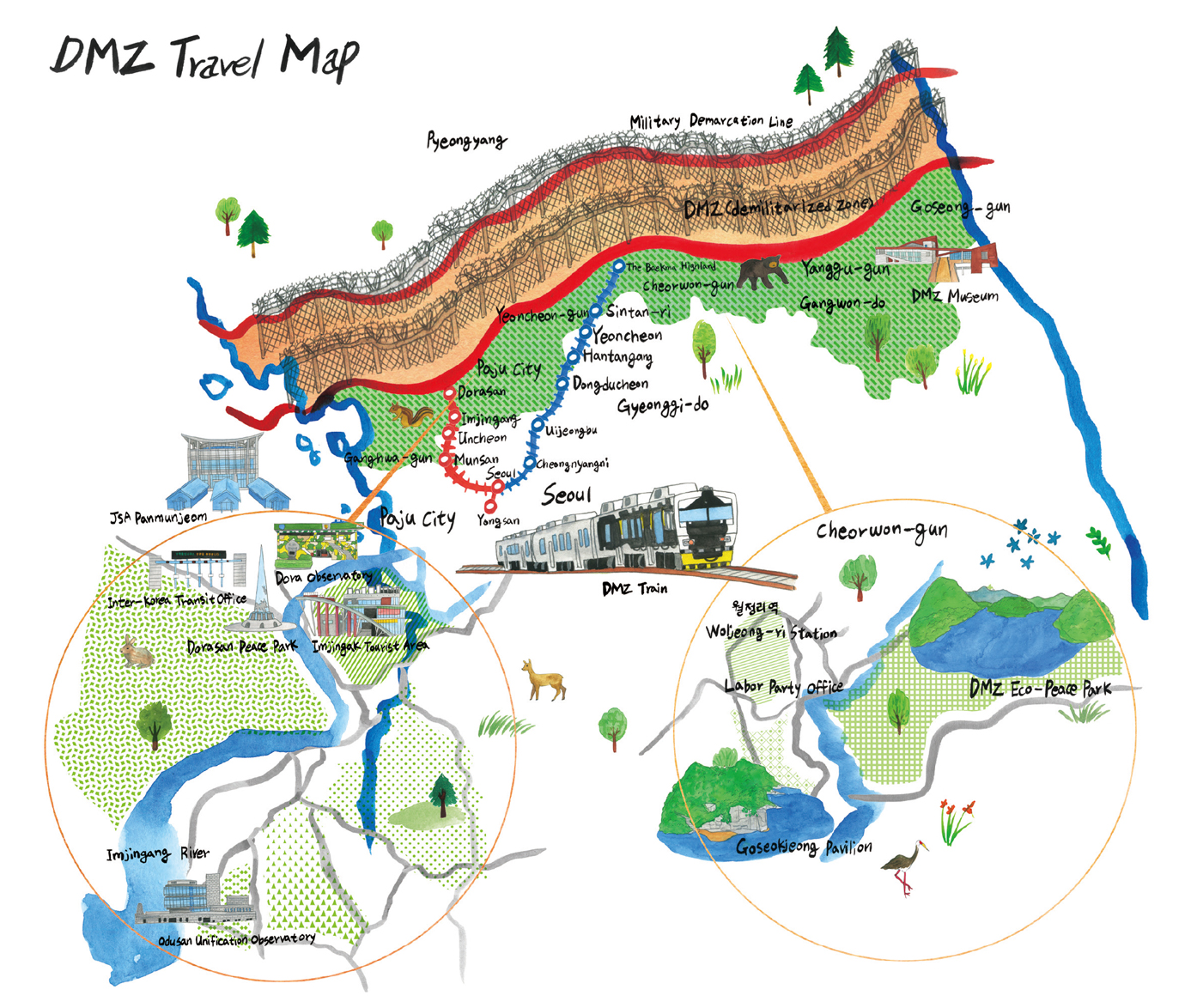
Travel Tip
DMZ Tour
-
Panmunjeom
Panmunjeom Tour for Non-Koreans
- Address : 184-11 Daeseongdong-gil, Gunnae-myeon, Paju-si, Gyeonggi-do
- Inquiries : 111
- Operating hours : 09:45, 13:15, 15:15
- Closed : Every Monday and Saturday
* Tours not available on Sundays or Korean national holidays - Registration : Tours can be arranged through the below travel agencies.
- International Cultural Service Club: (02)755-0073, (031)952-4066
http://www.tourdmz.com
- KTB Korea Travel : (02)777-6647, (02)778-0150
http://go2korea.co.kr/
- Panmunjom Travel Center : (02)771-5593
www.panmunjomtour.com,
http://www.koreaDMZtour.com
- Joongang Express Tour: (02)2266-335
www.jsatour.com - Other information: Passport required
-
DMZ Train
Gyeongeui - Line
- Rail line : Yongsan Station - Seoul Station - Imjingang Station (ID required) - Dorasan Station
- Closed : Every Monday and Tuesday, Korean national holidays that fall on a weekday
- Inquiries : 1544-7788, 1544-7755, http://www.letskorail.com/
* ID is required. (Passport for non-Koreans)
Gyeongwon - Line
- Rail line : Seoul Station - Cheongnyanni Station - Ui jeongbu Station- Dongducheon Station - Hantangang Station - Yeoncheon - Sintanli
- Baengma Highland Station
- Closed : Every Monday and Tuesday, Korean national holidays that fall on a weekday
* May 30 to June 3 (for five days)
* June 13 to June 17 (for five days) - Inquires : 1544-7788, 1544-7755, http://www.letskorail.com/
* ID is required. (Passport for non-Koreans)
Other Articles




Dreaming of Delightful Zone

Seeing With the Mind, Talking Through the Lens





Application of subscription
Sign upReaders’ Comments
GoThe event winners
Go


 June 2018
June 2018


